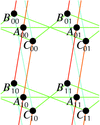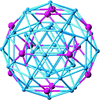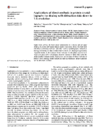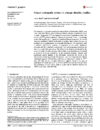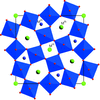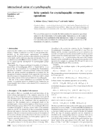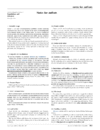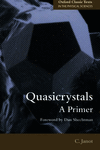issue contents
May 2014 issue

Cover illustration: The calculated distribution of X-ray intensities obtained from rocking a crystal plane about two orthogonal axes. The central peak represents the specular condition. The inset illustrates the capture area for a typical Bragg-Brentano diffractometer. Image from A new theory for X-ray diffraction by Paul F. Fewster [Acta Cryst. (2014), A70, 257-282].
mathematical crystallography
research papers
foundations
research papers
 access
accessinternational union of crystallography


book reviews



 journal menu
journal menu










